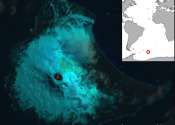Discovery of rare lava lake on remote sub-Antarctic island
A team of scientists has discovered a rare lava lake on a remote and inaccessible sub-Antarctic island. There are around 1500 land-based volcanoes on Earth, but despite the popular perception of steaming bubbling lava pools ...








